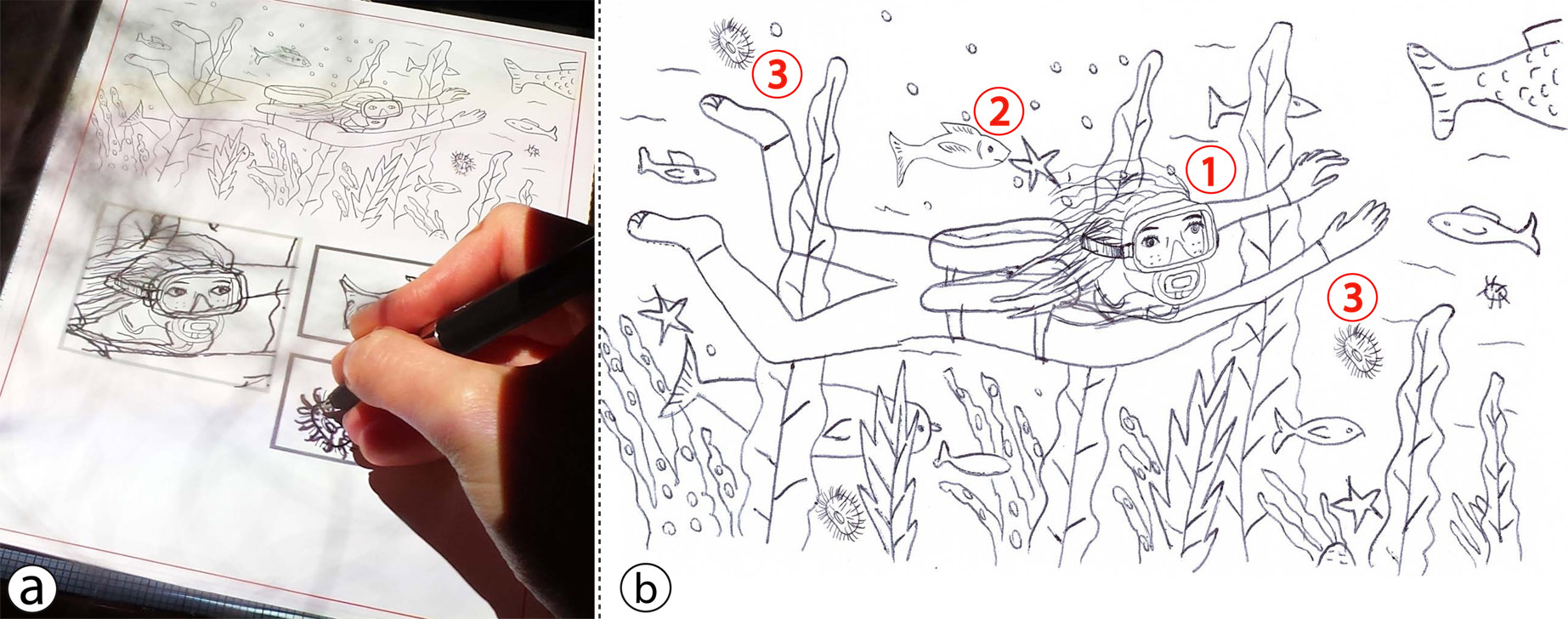Section: New Results
Creativity
Participants : Sarah Fdili Alaoui, Michel Beaudouin-Lafon, Ghita Jalal, Wendy Mackay, Joseph Malloch, Nolwenn Maudet, Theophanis Tsandilas.
ExSitu is interested in understanding the work practices of creative professionals, particularly artists, designers, and scientists, who push the limits of interactive technology. This year, we conducted studies and created tools for a variety of such users. Based on contextual interviews with artists, designers and scientists, we created the Color Portraits design space [17] to characterize color manipulation activities, which influenced the design of a set of color manipulation tools (Color Lab). We designed BricoSketch [21] to enable professional illustrators to work at different levels of detail on paper. We studied how makers remix each others' designs by analyzing metadata from over 175,000 digital designs from Thingiverse [19] . We created SketchSliders [20] to help scientists explore their data by sketching and manipulating free-form interactive controllers. Finally, we studied the meaning and use of the term evaluation within the NIME (New Interfaces for Musical Expression) community [14] .
Our studies of these “extreme users” allows us to obtain empirical grounding for the theoretical concepts of instrumental interaction, information substrates and co-adaptive systems. We expect to transfer what we learn to the design of creative tools, first for expert users, then for non-specialists and non-professional users.
Color Portraits – We conducted contextual interviews with 16 participants, who provided detailed examples of how they used color to create 69 different artistic or technical artifacts [17] . Based on results from these interviews, we created the Color Portraits design space to help identify color manipulation requirements that are poorly addressed by today's color manipulation tools. We then developed a set of novel color-manipulation tools that test the generative power of the design space. We presented these to users as probes. Our observations of how users interacted with the color probes provide implications for the design of more advanced tools.
|
BricoSketch – We conducted interviews with four professional illustrators and investigated how they use technology and paper in their creative process [21] . We also studied the evolution of the work of one of these illustrators for a period of two years. In interaction with this artist, we designed BricoSketch. BricoSketch enables illustrators to interactively create partial views of their drawings. Such views can be transposed and rescaled. Artists can then use them to create variations of their illustrations or add details with higher drawing precision. Our implementation is based on interactive paper technology that allows for above-the-surface interaction and supports traditional drawing tools such as common pens and pencils.
Remixing Designs – We investigated [19] how makers remix digital designs for physical objects on “Thingiverse”, a well-established online 3D-printing maker community. We collected metadata from over 175,000 digital designs and analyzed the remixing graph – links between sources and remixes that primarily exhibit a tree-like inheritance structure. We also used this data to identify particularly influential and surprising “Things”, which we further examined via qualitative case studies. We concluded with specific suggestions for online design repositories and design software so as to provide better support for remixing, and thus build stronger online maker communities.
SketchSliders – We developed SketchSliders [20] , range sliders that users can freely sketch on a mobile device to parametrize and customize their data exploration on a wall display. With a small combination of sketches and gestures, users can create complex interactive controllers, such as slider branches and data transformation sliders 5 . In addition to their natural custom shape, the sketched sliders can also be enhanced by interaction aids such as slider cursors, markers and distribution visualizations. We evaluated the sketching interface with six visualization experts and found that SketchSliders accommodate a wide range of exploration strategies, as well as help users focus and customize their visual explorations.
|
Evaluation for NIME – We explored the use of evaluation techniques and terminology within the past three years of the New Interfaces for Music Expression (NIME) conference [14] . We categorized each paper that mentioned evaluation according to five criteria: a) targets and stakeholders considered, b) goals set, c) criteria used, d) methods used, and e) duration of evaluation. Results suggest that the NIME community does not share a common culture with respect to evaluation, with little consistency regarding use of the term. This paper raises the issue of evaluation within NIME community, with the goal of using it more consistently and effectively in the future.



